How Food Brings Us Closer Together
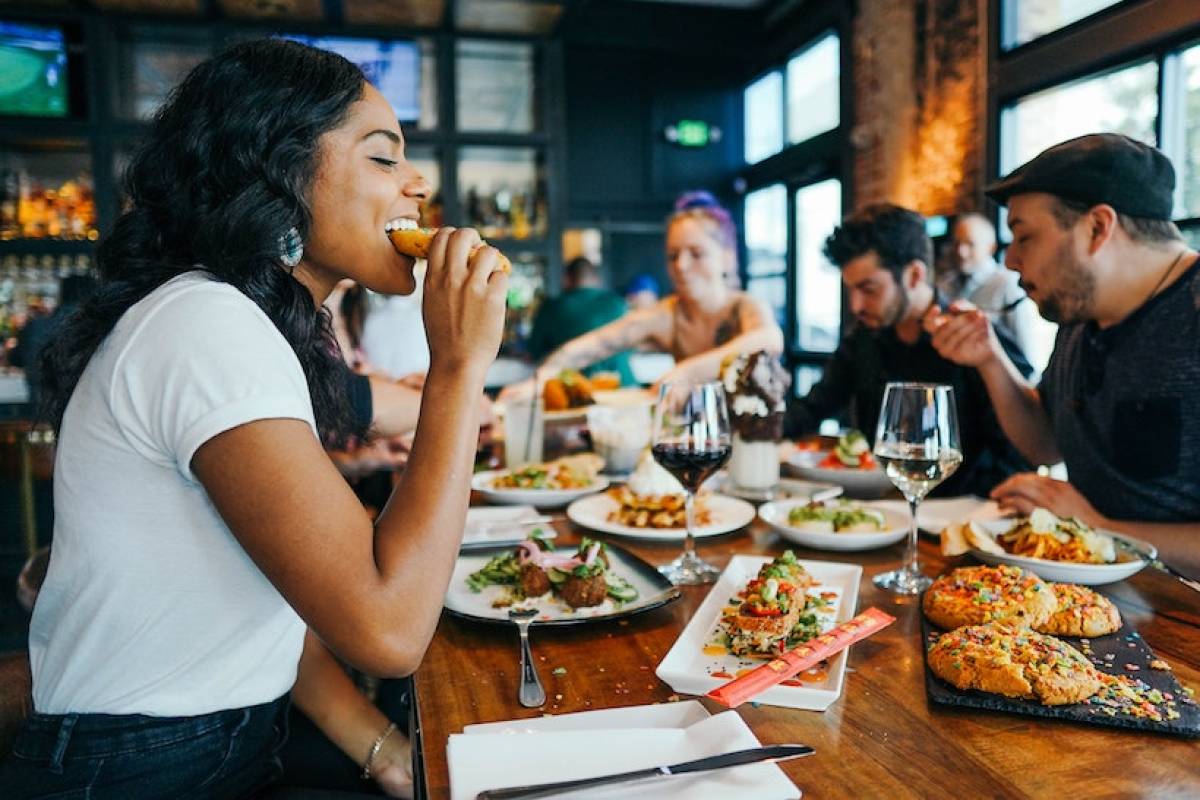
Feasts and sumptuous meals have connected people and brought us together since the beginning.
Food is far more than simple sustenance. Food is also a catalyst that brings people together, conjuring an image that can be likened to a warm hearth at home.
Sharing sumptuous food and meals with others is a cause for social bonding in spheres as close as our own family and as far-reaching as a bridge between cultural differences.
Hearty meals are a form of celebration; a reason to come together and bridge gaps while enjoying quality time with friends, family, and even strangers. It's another way of saying "I love you."
Food brings people together in many ways by strengthening various human connections, including:
Eating Food With Other People Strengthens Culture Connection
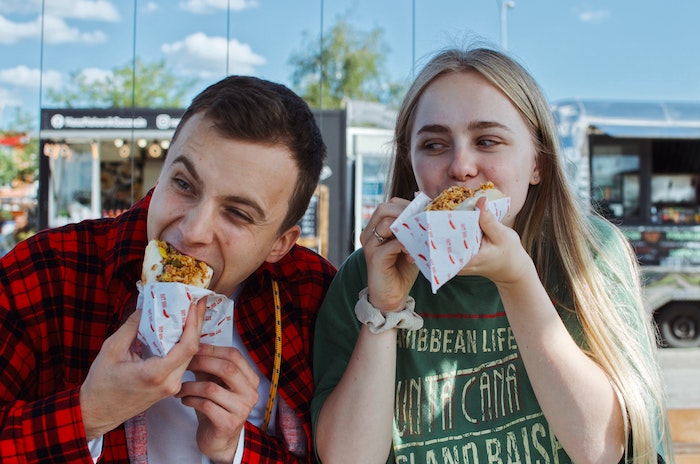
The connection between food, culture, and society runs deep. An Italian family living in another country may keep the food traditions alive by making the same recipes recreated for generations. These recipes can be a connection back to a country of origin and a way to bring tradition to a new place to be shared with others.
Think about the times you met someone from a culture different than yours. That memory sticks when a new friend invites us to dine with food from their heritage. It is often over the meal itself that we let down our guards while the sensory experience of the meal delights us into appreciation of other cultures. We can hold curiosity to learn how someone from a different culture eats, and in that shared experience, connections can be born.
Sometimes food brings people together by acting as the common ground between cultural differences. Many American cities are dotted with Indian restaurants and food trucks. The smell of fragrant spices tempts the senses, a garlicky plate of lasuni gobi: breaded and spiced cauliflower can create an appreciation between two people of different cultures.
The people not familiar with Indian customs or cuisine may be hesitant to explore this rich culture, but one bite of Indian food and hesitation can melt away and transform into appreciation.
Similarly, Mexican food is also very popular In the US. We share borders and enthusiasm for Mexican food, from riffs on original dishes like Tex-Mex spots, to chains, to the authentic mom-and-pop food trucks and brick-and-mortar locations.
While some sections of the American people and culture look down on Mexico, thankfully, others have realized the vibrancy in Mexican food is also found in the people and their culture.
Do not pass up the opportunity if you are lucky enough to try a home-cooked Mexican meal, Senegalese feast, or even Turkish dinner. One bite is enough to find a sense of love for different cultures. Food can link people to a culture and cultural identity and also arouse a strong feeling of appreciation and respect for one another.
Sharing Food Strengthens Relationships & Family Connections
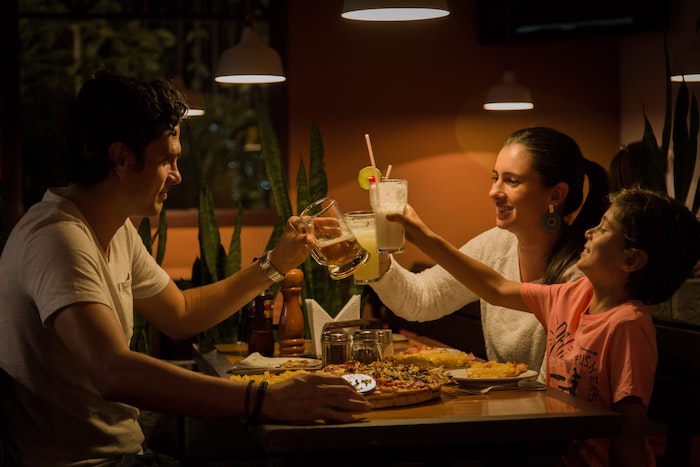
Each family has a unique connection to food and various food traditions. Perhaps it's nostalgia for that ham salad that grandma used to make that is a bygone item on menus these days, but it's something that was once popular in the local cuisine.
Or maybe it's how every Thanksgiving dad smokes a turkey over hickory wood, or how the family borscht recipe comes out in late summer in almost nauseating abundance, despite its alluring flavors. Food is the event that brings a family together on a consistent basis. It is a reason for everyone to gather together for sustenance and to talk and bond.
Studies show that families that dine together tend to eat more nutritious and balanced diets. The simple phrase "eat your veggies" can have a long-lasting impact on your healthy eating habits. In addition, being told to "eat all of your food" has a practical application of ensuring nothing goes to waste, although in rare cases it can send unhealthy signals to overeat.
Whereas a phrase such as "eat until you're full" conveys listening to one's body and practicing healthy portion control. It also teaches children and teens how to be social while learning to manage chores, like cleaning the dishes or chopping the vegetables during meal preparations.
The sit-down family meal time can teach children everything from food etiquette to how to treat others respectfully and even money management over the dinner table. Family meal time is a time when everyone is gathered together enjoying their food and where knowledge can be safely shared and questions answered.
Consistent family meal times also create a healthy routine, family tradition, and sense of stability for teenagers and kids who may need comfort and active parenting.
Sharing Food Is a Central & Meaningful Part of Celebrations
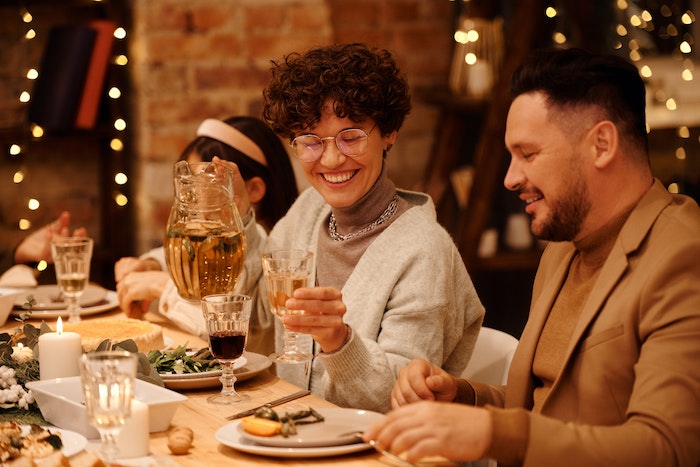
Celebrations across the world usually have food as the centerpiece of the gathering. Food is a meaningful part of any celebration. Food brings people together in all kinds of celebrations
The food may be delicious appetizers, entrees, and desserts, or they may symbolize a significant celebration aspect. For example, take the wedding cake. This is not an ordinary food item for anyone to slice. The cake is an integral part of the marriage after party.
Food is anticipation, a reason to sit together and share a meal and good conversation. It is a way to honor an event or a person. It can unite people and strengthen new and existing bonds while sharing in the oo's and ah's of flavor. Another example is the birthday party, and this celebration would not be complete without a dessert like cake.
Food also plays a significant role in religious celebrations. The Jewish holiday of Passover centers in part around a feast of specific Passover foods. Gefilte fish and matzo ball soup are two of six traditional dishes, with many foods at a Passover celebration holding particular symbolism. The fish symbolizes being fruitful and multiplying, and the matzo is a nod to religious history.
The Swedish celebration of Santa Lucia, which originated in Italy, is held during the dark winter month of December, a couple of weeks before Christmas. Though the festival is a reminder of light and a commemoration of Saint Lucia, it is tradition to bring sweet rolls shaped like puffy s's to share. The symbolism of the rolls stems back to a legend of Santa Lucia bringing food to the persecuted Christians in Rome to keep them from starving.
Benefits of Eating Food Together as Opposed to Solo Dining
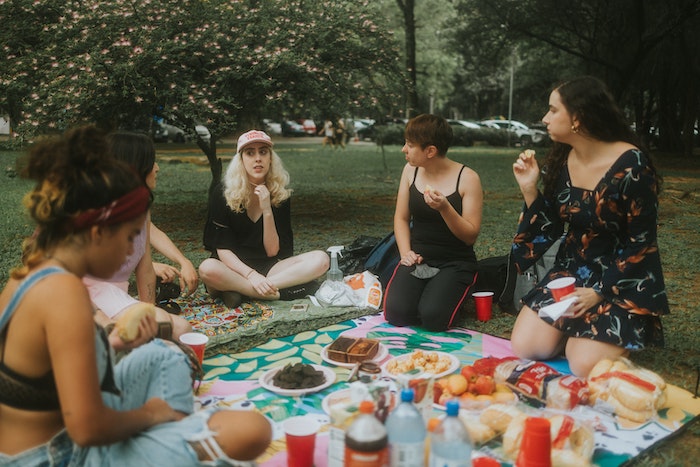
As a powerful and natural means of connection, the benefits of eating food together go beyond the obvious pleasure of sharing a meal with friends, colleagues, family, romantic interests, or even total strangers.
People are social creatures. As such, we are wired to seek human connection and one way to satisfy that primal need for social connection is through sharing a meal with other humans. How often do we ask someone to go for lunch or dinner with us, whether with a friend or a date?
Food is both a necessity and enjoyment. You can banish feelings of loneliness by simply dining with a friend and enjoying their company eating food. Here is a fact worth remembering: long-term loneliness has the same effect on the human being as smoking 15 cigarettes a day. Both can shorten our longevity. Social connection isn't a luxury, just like food isn't either. It is a necessity.
Eating healthy with those we care about has the potential to inspire healthier eating habits, particularly in kids and those struggling with food-related health issues. If we see our friend or family member going for a healthy salad, we may be inclined and more likely to order something similar that is body and mind-benefiting rather than another round of junk food.
Moreover, learning to cook food and eating food together with other people can improve mental health and may also lower the likelihood of substance abuse, according to research. In students, the social component of eating a meal or snack with friends has been linked to better academic performance. Perhaps this is because we need a balance of work and play.
Once we have done something social like eating food together, we are thoroughly satisfied and can focus better on our day to day activities. Eating food together as part of a group of two or more offers a social outlet, inner satisfaction, and something pleasurable to look forward to each day. In this way, food brings people together.
In terms of love language in relationships, eating together is a form of quality time when all parties are fully engaged and free of distractions. It also boosts morale, particularly in a group setting like the office where there may be little time for socializing.
A fun fact to note is that people eating the same food build trust. You may not be royalty with a servant to take the first bite to ensure your food won't kill you. But when people eat the same food, they tend to trust each other. Perhaps this goes back to the beginning when humans were tribe-oriented and found trust in a shared meal at the end of a physically wearing day.
Social Eating Also Strengthens Communities
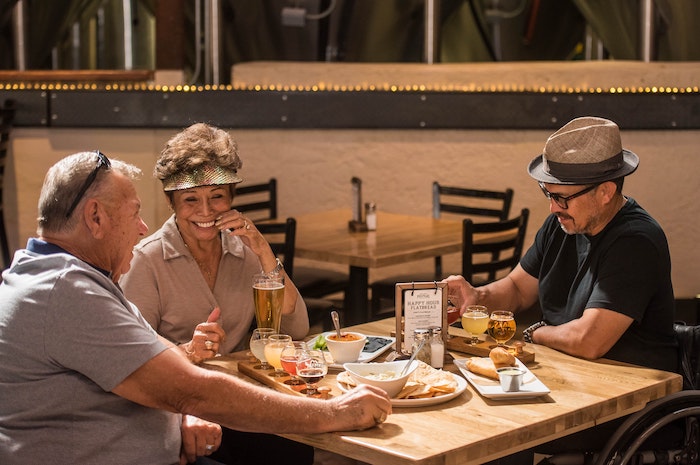
Social eating connects communities of every kind. Whether it's a neighborhood get-together, a gathering of families, or anything in between, people who eat together in a social setting note improved mood and a better sense of health and well-being, especially mentally and emotionally. They report feeling happier with their lives, having greater trust in general (especially trust in others), and a larger social circle they can depend on for support.
Social eating also keeps people engaged in group activities. In social settings, eating food together is usually a form of leisure and not something that is rushed. Eating with others allows us slow down, build stronger relationships, and enjoy life more.
Dangers of Solo Dining
An estimated 46% of people in the US eat meals and snacks alone. It has even become socially acceptable to eat food alone. While eating alone can have time-saving benefits, are we not depriving ourselves of much-needed social time and a more enjoyable, healthier life experience?
Besides, eating alone has been linked to a variety of mental and physical health issues, including putting you at greater risk for type 2 diabetes, high blood pressure, heart disease, and more. Eating by your lonesome may be bad for your overall health.
However, for as long as time has existed, gathering to eat food together has brought people closer for survival, bonding, support, and connection. Sharing food nourishes our bodies while creating cherished life-long memories with others, from the beloved memories of family recipes to exotic dishes shared with strangers who ended up becoming our friends.
While the modern world seems to be gravitates more and more towards solo dining, gathering together to eat food as a social event will never grow old. A shared meal is an experience that warms our hearts and puts a smile on our faces.
Conclusion: Food Brings People Together & Enhances Wellbeing
Food is a central part of celebrations, a connecting bridge between cultures, and a way to bring people from all walks of life and backgrounds closer together.
Indeed, the power that food has to bring people and cultures together is a light that offers hope and love for humankind in a world fraught with many challenges.
As Virginia Woolf said, “One cannot think well, love well, sleep well, if one has not dined well.”





















